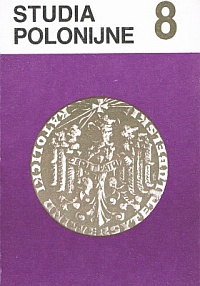Poles in Luxembourg (1918-1985)
Main Article Content
Abstract
The article presents the history of the Polish ethnic group in the Great Dutchy of Luxemburg in 1918-1985. The Polish immigrant flow to the Dutchy has started after World War I. The first groups arrived from Westphalia, Belgium and France as well as from Poland particularly in 1937-1939. In the inter-war period about 5000 Poles lived in Luxemburg, there were the largest centres of Polish immigrants in the southern, industrial part of the Dutchy particularly in Esch-sur-Alzette. The emigrants were mainly employed in the mining industry. The immigrants arriving from Poland in 1937-1939 found jobs in agriculture in the northen part of the country. They set up a few socio-cultural and labour organizations: eg. The Catholic Union of Polish Workers and the Union of Polish Workers (Union Polonaise). Besides, in 1933 a school for Polish children was opened. Pastoral care was performed by the Polish priests from Belgium and eastern France. Only in a short period of September 15, 1930 till June 1, 1931 Rev. H. Majkowski lived and worked in Luxemburg.
After World War II the Polonia in Luxemburg consisted of 3000 people. As a consequence of repatriation and emigration 1500 Poles remained there in 1950 and finally 1000 in 1970. New labour organizations came to existence: the Union of Polish Christian Workers and the Polish Union. There were two Polish schools and a group of Polish folk singers and dancers. The following priests worked in Luxemburg then: W. Kotowski SVD, A. Müller OMI, J. Thiel OMI and J. Adamczyk OMI.

